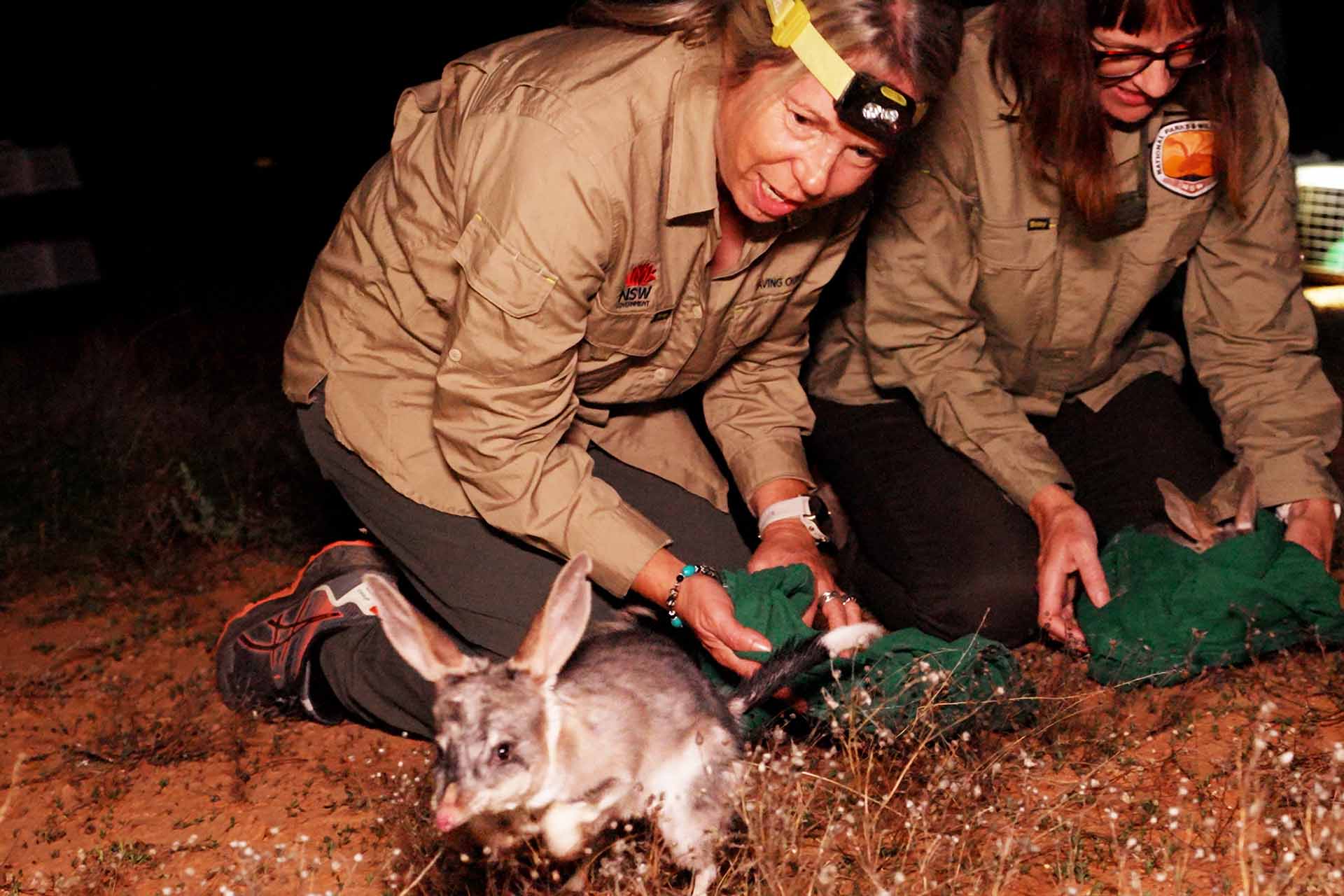Bilbies bound in just in time for Easter
Australia’s eco-friendly answer to the Easter bunny, the bilby, is bouncing back, in a ground-breaking NSW Government program that this week delivered more bilbies to their new outback home.
Twenty bilbies bred at Taronga Western Plains Zoo in Dubbo were released into a specially built area in Sturt National Park, which is operated in a partnership between the NSW National Parks and Wildlife Service (NPWS) and the University of NSW/Wild Deserts.
The special delivery saw the bilbies transported from Dubbo to the far western corner of NSW by aircraft in individual carriers. When night fell, they were released from protective sacks into areas with existing burrows, giving them they best chance of survival.
Among those releasing the bilbies were UNSW Sydney ecologists Dr Bec West and Dr Reece Pedler, who manage the remote Wild Deserts site, and their three young children.
The bilbies are part of a program establishing a network of 10 feral predator free areas totalling 65,000 hectares in NSW national parks, in one of the most significant ecological restoration initiatives in the state's history.
The latest batch of mammals reintroduced to the site in Sturt National Park also included Taronga-bred western quolls – a carnivorous marsupial related to the Tasmanian Devil which once roamed most of mainland Australia.
The quolls and bilbies are an important part of research looking to improve survival rates of the reintroduced species “beyond the fence”.
Extinct in the wild in NSW for over a century, after being decimated by feral cats and foxes, 30 bilbies kicked off the program in 2018. Now across three NSW national park sites, the bilby population is estimated at around 700.
Bilbies are an essential part of the plan to rebuild the landscape as it once was, and are known as the ecosystem engineers, digging, spreading seeds and boosting water and nutrient cycles.
It’s not just bilbies who are reaping the rewards, with the Feral Predator Free Area program set to reduce the extinction risk for 33 locally extinct species and provide conservation benefits for more than 50 threatened species.
Thirteen species listed as extinct in NSW, as well as the koala, smoky mouse, New Holland mouse, brush-tailed rock-wallaby and plains rat, have been reintroduced into NSW national parks under this program. https://www.nationalparks.nsw.gov.au/conservation-programs/feral-predator-free-project
Quote attributable to Trish Harrup, Acting Deputy Secretary NSW NPWS
“There is a clear scientific consensus that the establishment and management of a network of Feral Predator Free Areas is critical to protecting and recovering threatened species.
“It's so exciting to see what we can achieve when we focus our efforts together. We can apply those learnings to what we are doing within the fenced areas, but also improve our management of landscapes right across the state and our management of feral animals.”
Quote attributable to Claire Ford, Manager Population Development and Welfare Taronga Western Plains Zoo
“Australia has a really unfortunate reputation as having the greatest mammalian extinction rate and to see the bilby come back in a landscape that has changed, gives hope for the future that we can fight extinction.”
Quote attributable to Prof Richard Kingsford, UNSW Leader of Wild Deserts Project
“We should really be celebrating the bilby not the bunny. Rabbits are a feral animal and wreck the landscape, bilbies and bandicoots do the opposite. Through a huge, concerted effort we've got more bilbies now than we had ten years ago, not just here but all around Australia so we should really embrace them.”

Easter bilbies released into the Sturt National Park (Sharon Malloy and Trish Harrup)